In mid-2020, Sydney’s tight Ferrari community began hearing rumours of a remarkable barn-find. Reputedly a 1967 330 GT, the V12-powered two-plus-two Pininfarina-styled coupe. According to the rapidly circulating gossip at the time, the mystery car was being hawked around classic-car dealers.
A friend of a friend, who is a serious Ferrari collector, was told that if he wanted to know more, he should ring a number the following evening. Intrigued and eager to learn the truth, he spoke to the mechanic tasked with selling the V12 Ferrari on behalf of the owner’s widow.
Told the car had been sitting in a garage undriven for 46 years, my friend, who wants to remain anonymous (let’s call him Franco) was justifiably sceptical, despite being assured, “It’s actually a 330 GT in a shed and it is real. There’s no question of its authenticity.”
Still dubious despite being reassured that the car was indeed as described – and with just 33,378miles (53,734km) on the odo – the mechanic sent Franco’s mobile two photographs of the Ferrari as further evidence. The car looked genuine. Now convinced the 330 GT was worth further investigation, Franco was also told two or three other people were interested in buying the car. The race was on.
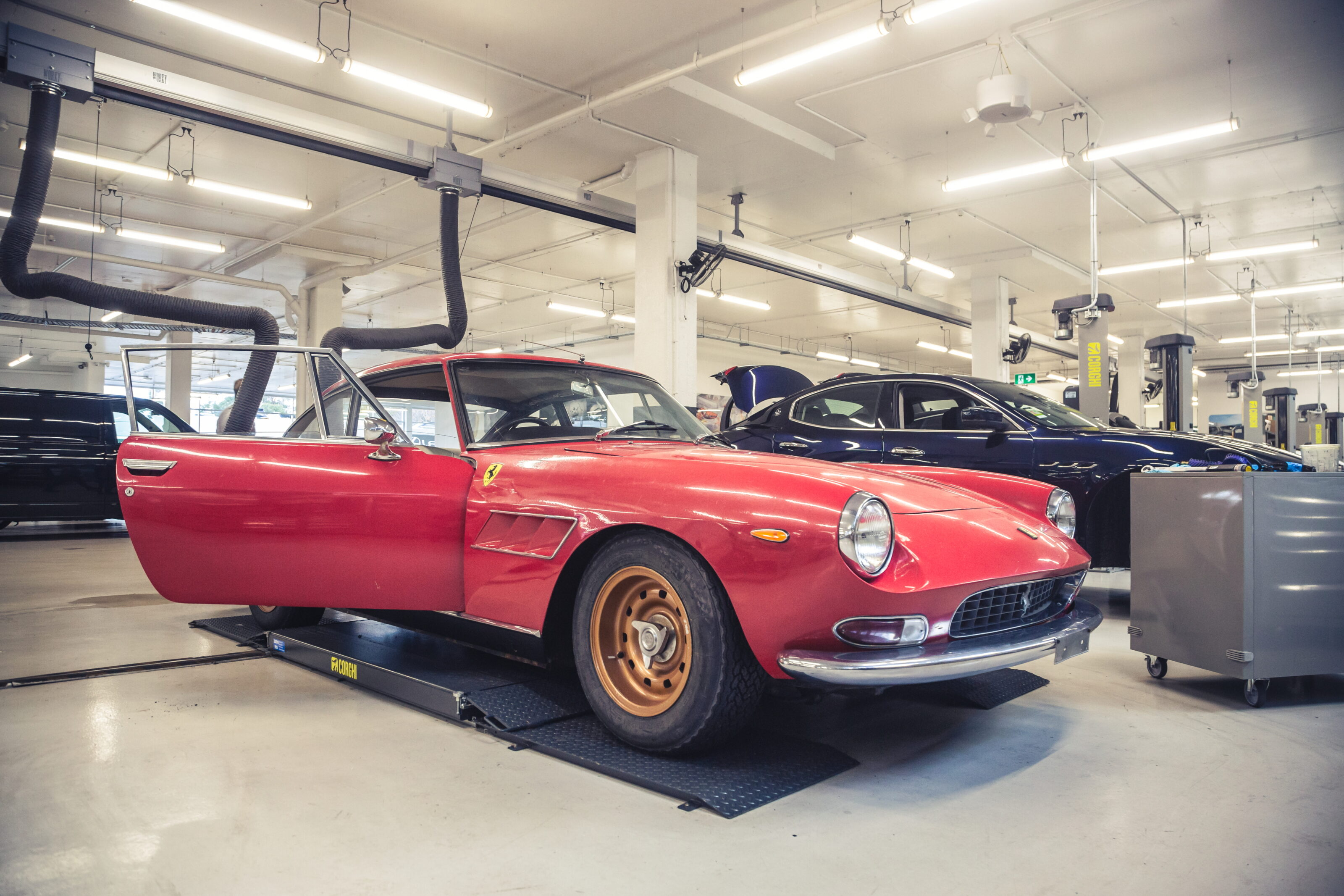
If Franco turned up at 7:00am the next day he could meet the mechanic at his workshop, about two and a half hours south-west of Sydney, and be taken to the (still secret) address. Only then would Franco be introduced to the widow to be the first potential buyer to see the now suddenly precious car.
Accompanied by the mechanic, Franco and his two sons reached their destination on time to discover a modest home with only a pathway leading from the road. They also sighted a small, single-car garage about 100 metres down the hill from the house, yet there was no evidence of any form of driveway; no hint any vehicle had driven to or from the shed in decades.
Minutes later they were unlocking the garage doors to expose the red Ferrari to the outside world for the first time since 1974. Covered in layers of dust, the paint badly crazed, the Michelin XWX 215/70 VR15 rubber still holding some air, the floor covered in carpets to absorb any moisture and the walls lined with insulation, it was obvious the Ferrari had been deliberately sealed off in the garage to be preserved. Stunned, Franco could only wonder: why?
The battery was flat, and they struggled to unlock the driver’s door, but the boot lid opened easily to reveal a full-sized spare. The car rode on Campagnola wheels, but a full set of Borrani wire wheels was also stored in the garage. It was what was under the spare that astonished Franco and the widow.
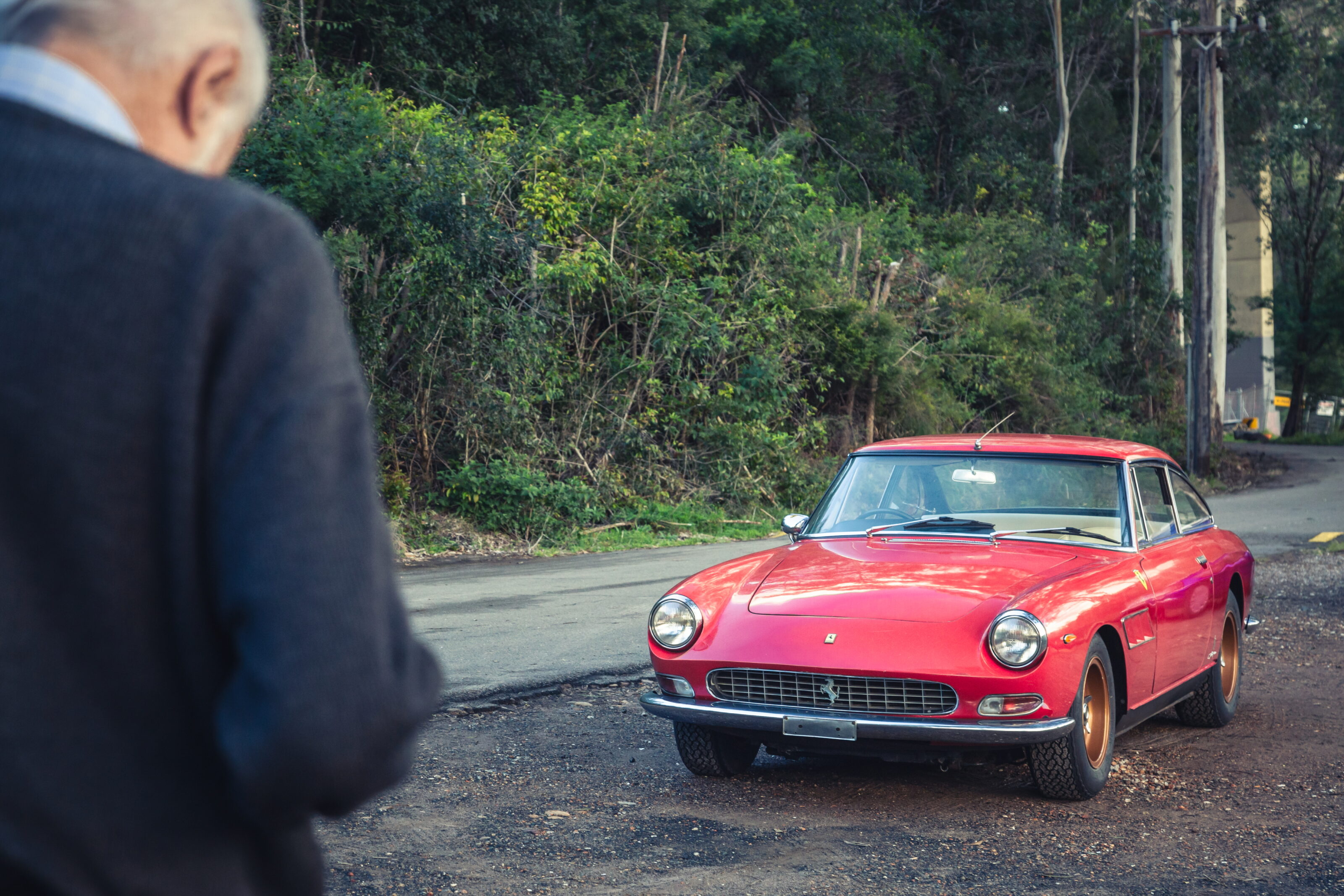
Now convinced the 330 GT was worth further investigation, Franco was also told two or three other people were interested in buying the car. The race was on.
Freeing the generous leather bag, Franco discovered the Brazilian-born owner had neatly preserved the Ferrari’s entire history from the moment the ‘330/GT 2 + 2 Coupe’ was ordered by Maranello Concessionaires, the UK distributors, on November 7, 1966, with delivery set down for December ’66.
The cache included almost all the documents – receipts, service records, fuel dockets, repair bills, ferry tickets, letters, sale notes – related to the car’s life. They revealed it was one of 36 right-hand- drive (of 455) Series II 330 GTs built and one of only three with a factory electric sunroof. Unknown delays meant delivery of the ‘Azzurro’ (blue) Ferrari to a Bill Chandler took place on February 28, 1967, the car costing £5800, four times the price of a Rover 2000 P6.
Staggeringly, too, Franco discovered the Ferrari’s extensive toolkit and jack were still intact in a leather roll found in a small compartment under the bonnet. Further examination revealed the car’s only missing parts were a section of the chrome windscreen surround and a chrome stripe along the left sill.
Most astonishingly of all, the owner – his Australian widow wants their names to remain a secret – erected 100mm by 100mm timber poles around the car to form a cage, apparently to prevent the Ferrari from being stolen. Bizarrely, illogically, that also meant the owner was prevented from driving his Ferrari. We’ll never know why. He died in August 2019 and his widow can’t explain why her husband built the garage specifically to imprison the Ferrari.

Quickly she filled in the gaps and relayed the history of the car to a fascinated Franco. The married couple worked together as Qantas first-class stewards during the 1970s, flying the Sydney-London-Sydney route, which meant being away from home for 10 days at a time.
The pair enjoyed quality cars and wanted a Ferrari. In February 1973, they wrote to Ferrari in Italy, enquiring about the possibility of buying a tourist-delivery Dino 246, even asking about a potential competition version. The March 1 reply came from Michael Barker at W. H. Lowe, the Australian distributors, quoting a European delivery price of $8100 for a Dino GT and $8600 for a GTS (a leather interior was a $370 option). After paying taxes and duty, the Dino cost $16,000 if distributed in Australia; this when an HQ Holden Kingswood was $2985.
Having decided not to go ahead with the Dino, in August 1974 they bought the 330 GT for £1900 pounds (one-third the new cost) from Stuart Adams, the third owner. During Adams’ ownership, the Ferrari was painted Rosso Corso and reupholstered; curiously, vinyl replaced the Connolly leather.
Before shipping the Ferrari to Australia, our couple understandably decided they should take the 330 GT on a pilgrimage to Maranello as part of a month-long Continental tour that took them as far south as Sicily. This journey added around 5500 miles (8850km) to the milometer. Sadly, we don’t know if any photographs of the tour exist, but as proof, Franco has inherited the Seaspeed Ferry tickets for the channel crossings.
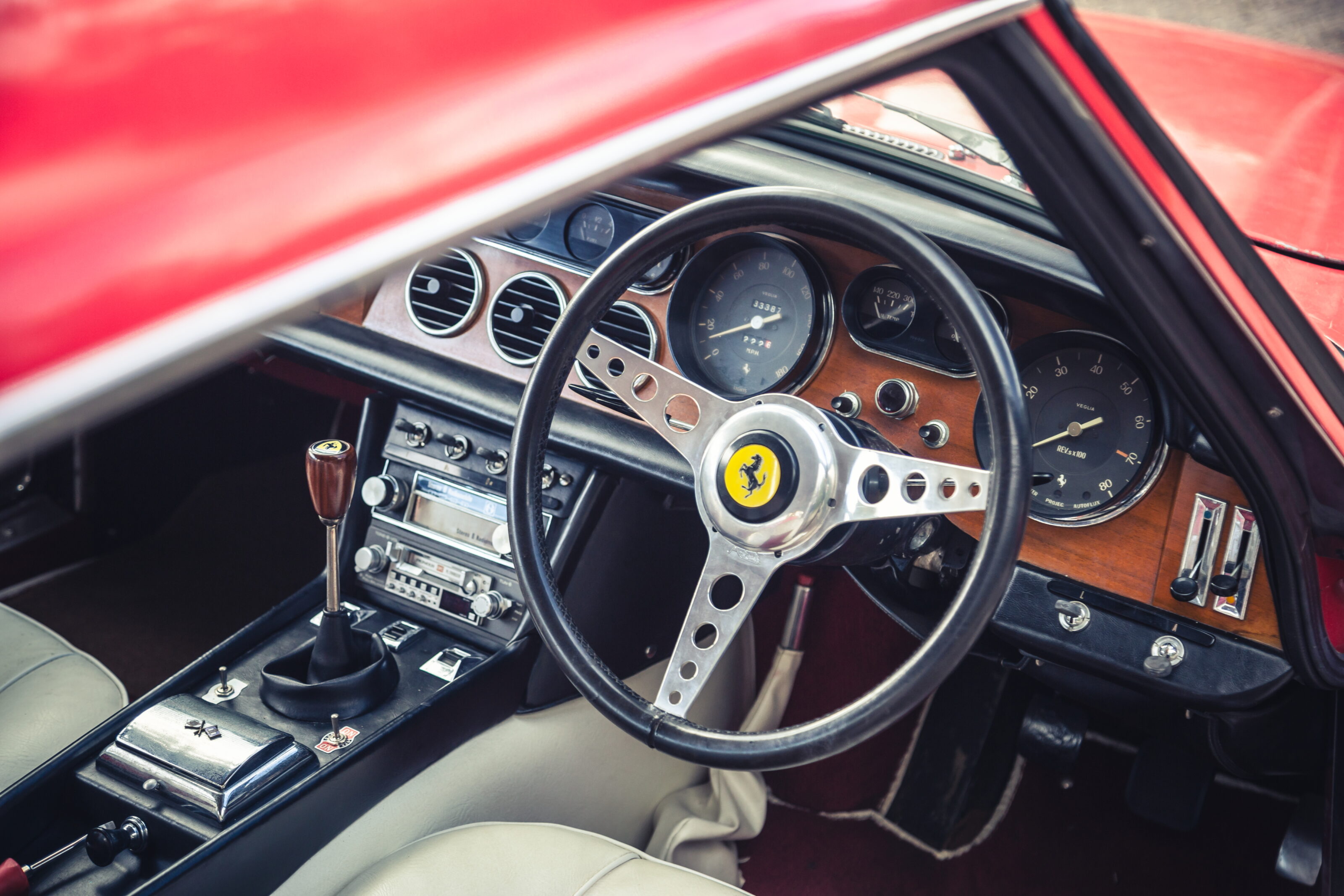
In December 1974, the Ferrari arrived, via a container, in Sydney and was collected (apparently along with a W113 Mercedes-Benz SL pagoda) from the docks by the couple on December 12. We don’t know if the Ferrari was driven to its clandestine location, or if it was trucked, but we do know it was never registered in NSW. I like to think the owner enjoyed at least one proper 330 GT drive in Australia before the Ferrari was shut away.
A year after her husband died, his widow decided she wanted to sell the car and sought the advice of her trusted mechanic. Realising such a low-mileage barn-find Ferrari, with an impeccable providence, was an increasingly valuable collector car, she and the mechanic researched values and came up with an undisclosed price. There was no negotiation.
“This is my price. It’s fixed,” she told Franco.
Knowing it was more than he wanted to pay, and probably more than the unrestored car was worth, Franco says, “When I saw it, I made up my mind to buy it no matter what. It wasn’t a question of money; I wanted the car to have a good home. I’m not touching it.”
Within a week the 330 GT was in the swish service department of Ferrari North Shore in Artarmon, Sydney, in the care of service manager Adriano Giorgi.
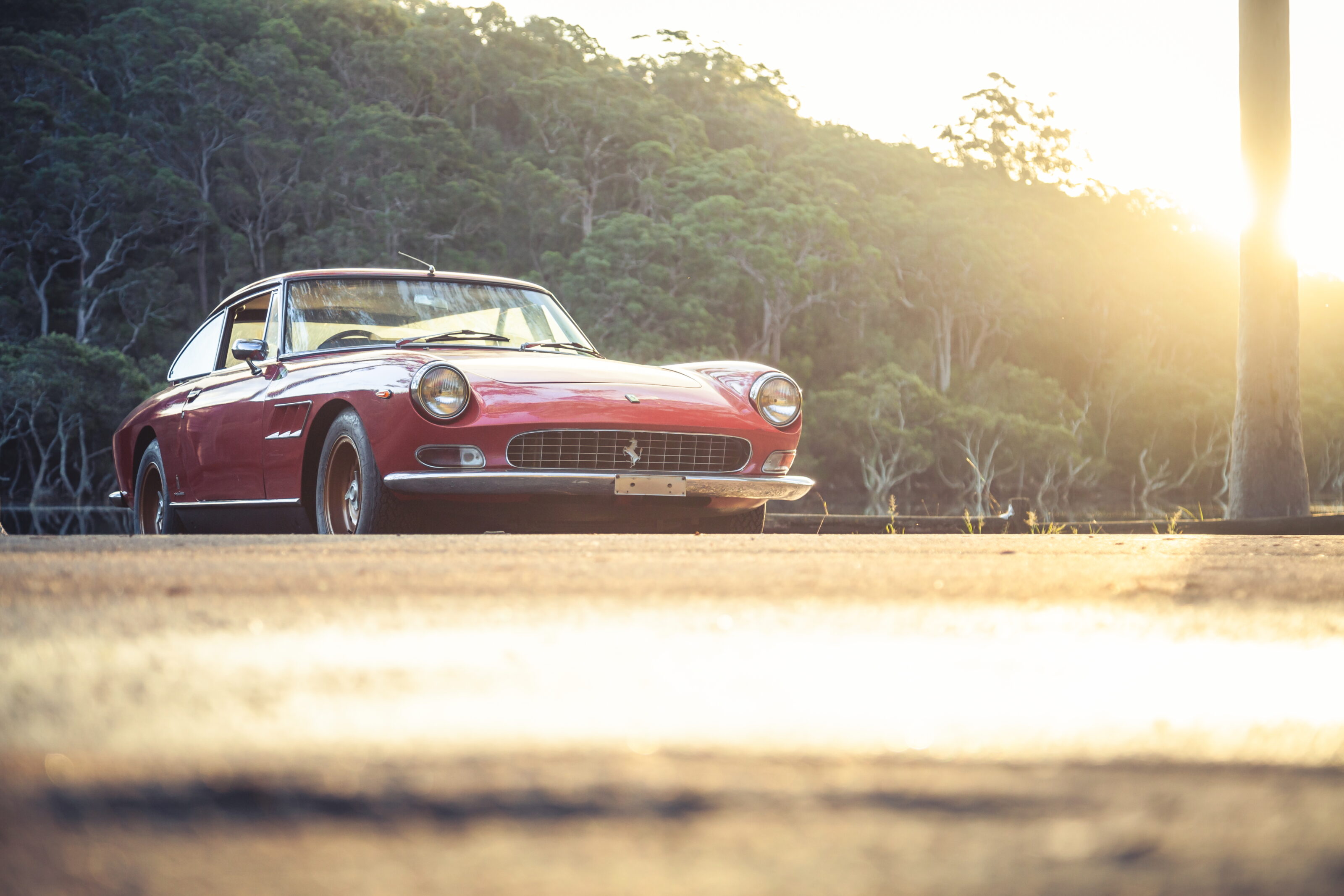
Franco still won’t say how much he paid for the 330 GT. We do know that restored Series II models currently sell for around $400,000 to $500,000, about half the value of the then-current (1966-1968) and even more elegant two-seat GTC that shared its 2400mm wheelbase (250mm shorter than the 2+2) and independent rear suspension with the earlier and even more valuable 275 GTB Ferrari.
Dedicated Ferrari enthusiasts will know what follows, but for the rest of us a little history is appropriate.
Ferrari launched the 330 GT 2+2 in 1963 as successor to the popular 250 GTE. Powered by a new 4.0-litre version of Gioacchino Colombo’s sohc V12, the 330 GT retained the older car’s wishbones and coil front suspension and live axle rear suspension, four-wheel discs and four-speed gearbox.
To improve rear seat room, Ferrari stretched the wheelbase by 50mm to 2650mm and sent Pininfarina drawings of the longer chassis. Twenty-nine-year-old Tom Tjaarda, who’d moved from Ghia to PF in 1961, was asked to style the body (see sidebar, p101).
Back in Artarmon, after a gentle clean, no attempt was made to start the Ferrari until the engine and its ancillaries were given a thorough check. The cam covers came off, the bores checked by endoscopic camera and found to be “as clean as a whistle” and the engine free to turn over.
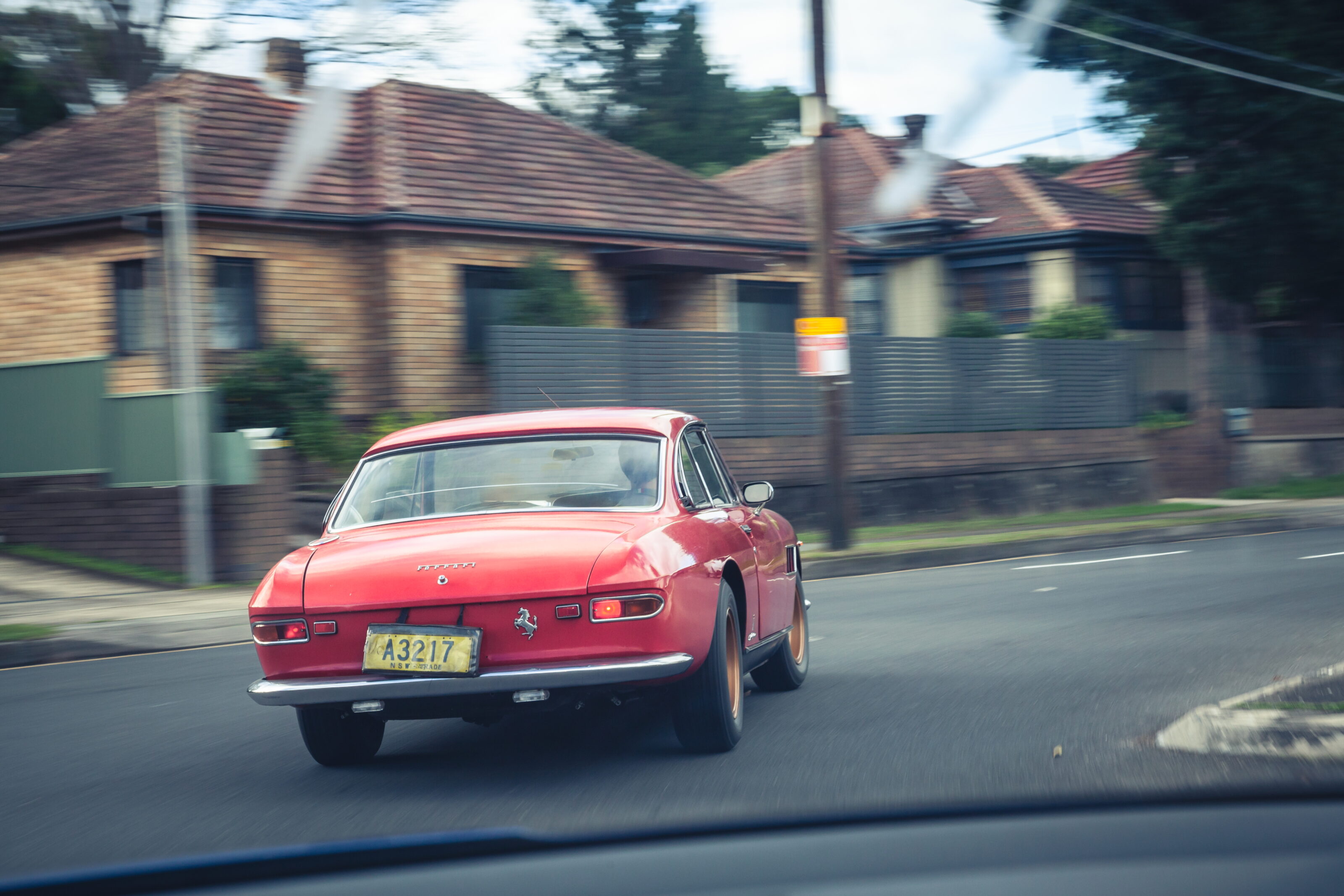
They cleaned the spark plugs and the distributor, drained and replaced the fuel and oil, battery and tyres. Electrical energy employed, Adriano was shocked to find the sunroof and door windows opened and the original Pioneer radio still worked.
However, not all was ideal. Giorgi then discovered the decades of sitting idle meant the clutch was bonded on. Sensibly, he decided not to try starting the V12 in gear. Given the evidence of a mechanical flaw, they choose to meticulously examine the Ferrari’s underpinnings while it was on a hoist.
“You can tell Ferrari was used to building racing cars and not production models,” Adriano explained after inspecting the suspension and brakes, “They must have been unbelievably expensive to build.”
No other obvious flaws were found, and the clutch was separated. Now was the moment to discover if the Ferrari would start. With Franco on hand to witness the drama, it took a full 10 seconds of cranking before the V12 fired up, booming into life and settling initially to a 2500rpm idle, the mechanical tacho needle jiggling evocatively.
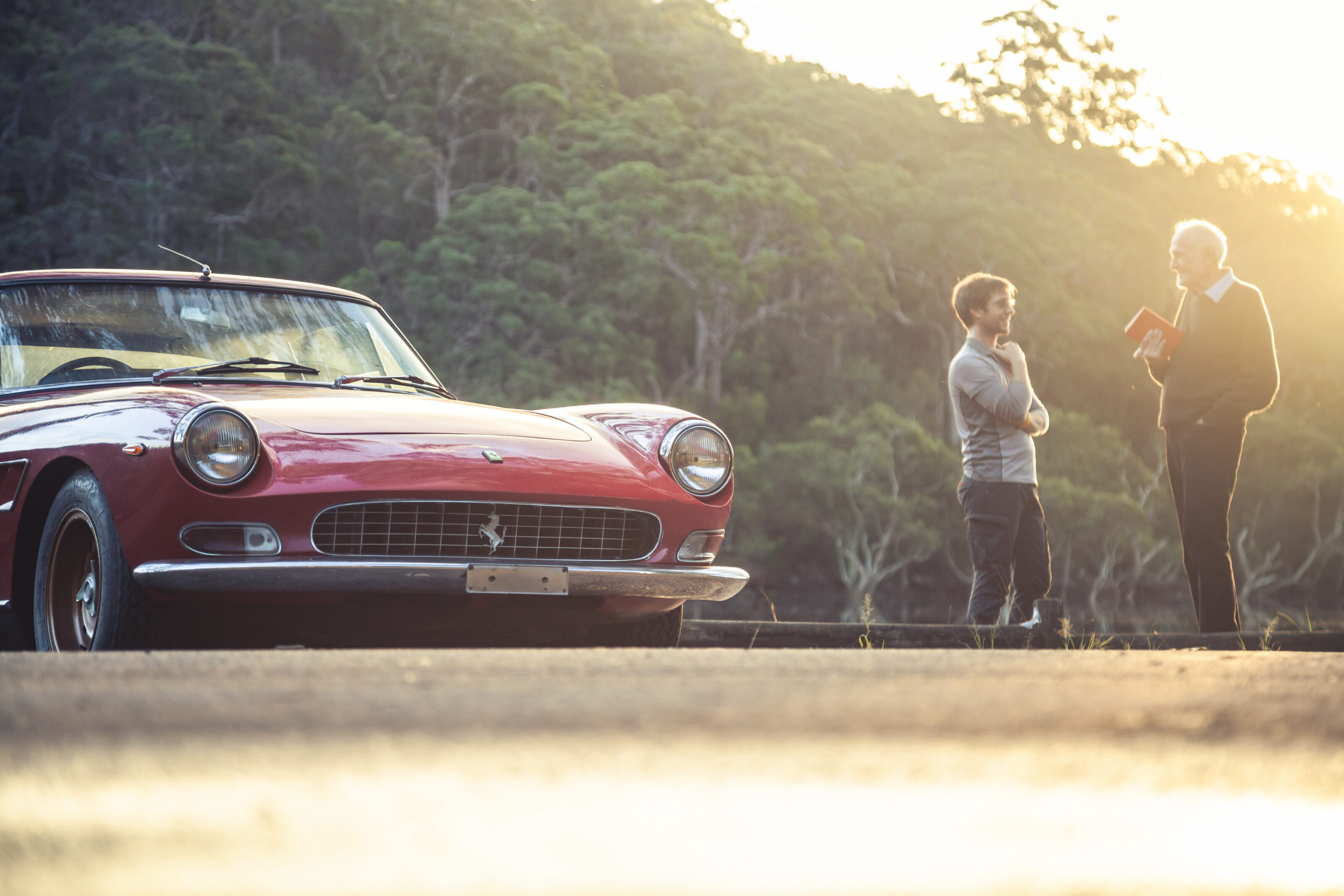
Best of all: no worrying – and potentially expensive – smoke emanated from the exhaust. A couple of weeks later Spencer Martin – he of the 250LM – and I watched the 330 GT fire up – “start you bastard” – and Franco, having told us the car’s intriguing history, agreed that I could write a Wheels story on the Ferrari.
Editor Campbell concurred, especially if I could drive the Ferrari, if only briefly, for Thomas Wielecki’s camera. We quickly arranged a December date for Adriano to drive the car (on trade plates) to our location, close to the service centre, where I would be permitted fleeting wheel time. That didn’t work out, though Thomas was able to begin shooting the car.
Rain for six consecutive January/February Saturdays forced the cancellation of each planned shoot. I’d begun to doubt the story would ever happen and it wasn’t until June that we established another firm appointment. With Adriano hobbling on crutches, Giacomo Bongiorno, one of the two mechanics who work on classic Ferraris at Ferrari North Shore, became our driver.
With the engine warmed up, the exhaust echoing through the service centre, Giacomo edged the 330 GT out on to the road. Thomas, camera at the ready, rode with me in the back seat of my Skoda. All too aware that photographing potentially unreliable classics requires perseverance, Thomas wanted to grasp every opportunity and started shooting the car.
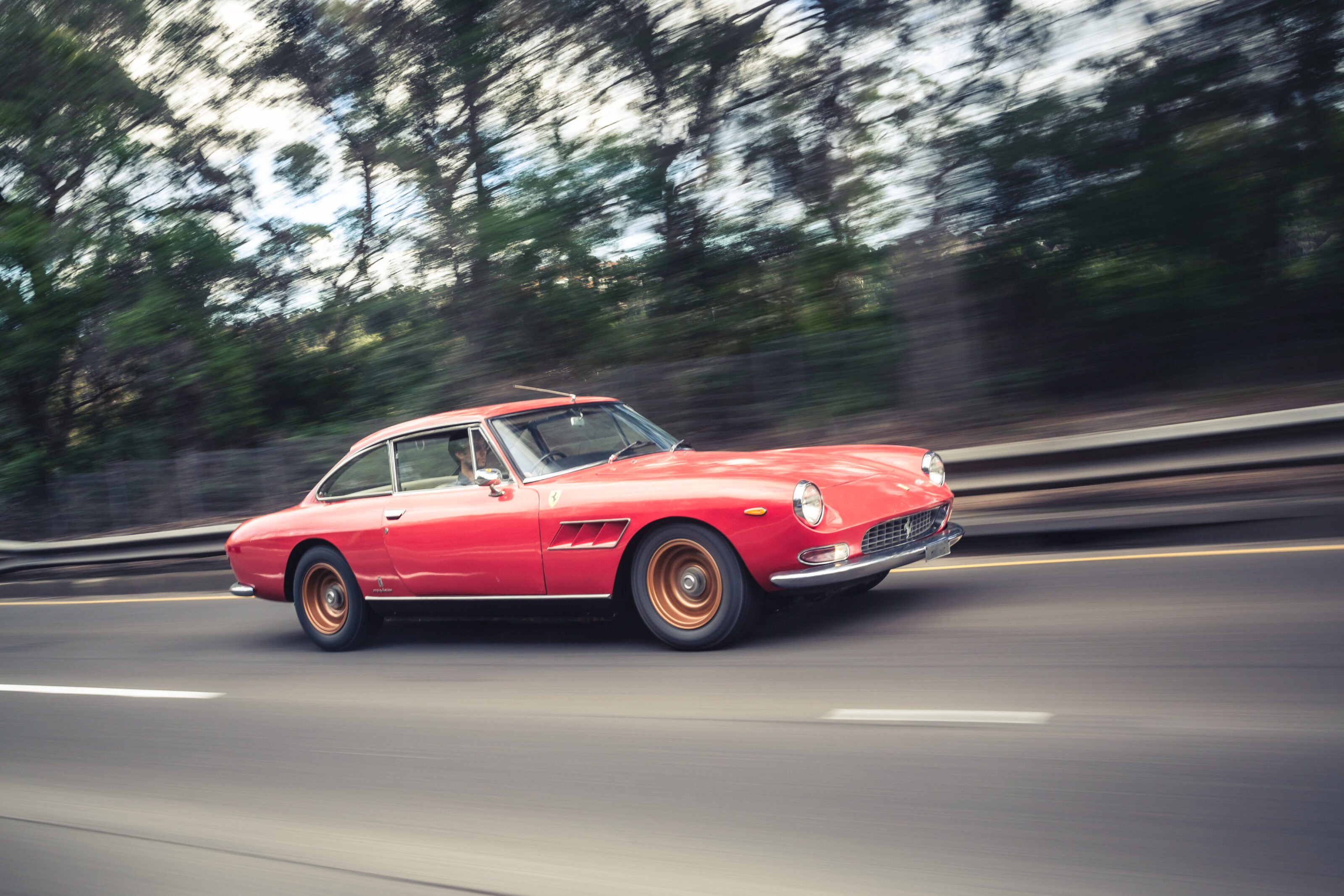
We knew the swooping six-lane Roseville Bridge offered the best chance for tracking shoots. Miraculously, traffic thinned, the Ferrari slicing ahead, Giacomo occasionally wrenching his eyes from the road ahead to see if Thomas and I were still on station close to the 330 GT. Only on the climb up the other side was the Ferrari consumed by SUVs and tradie utes, Thomas delighted at the contrast they presented to the tiny red car.
We thought all was sweet when the Skoda arrived at Davidson Park on the upper reaches of Middle Harbour. But the Ferrari was slow to appear, and smoke billowed from both rear wheel arches when it eventually pulled up. A worried Giacomo, feeling the rear discs binding on the drive down the hill, shut the engine off.
He reminded us that this six-kilometre run was the longest the 330 GT had undertaken in 47 years. With the Ferrari unable to move, rear discs locked on, Thomas went to work while we waited for the brakes to cool.
“That’s what happens when you buy an Alfa,” a walker called out as he passed. We didn’t bother to correct him.
Giacomo’s attempts to start the Ferrari failed. Suspecting the fuel was vaporising in the manifold he checked the fuel pump and tried again. And again. On the tenth attempt, the engine roared.
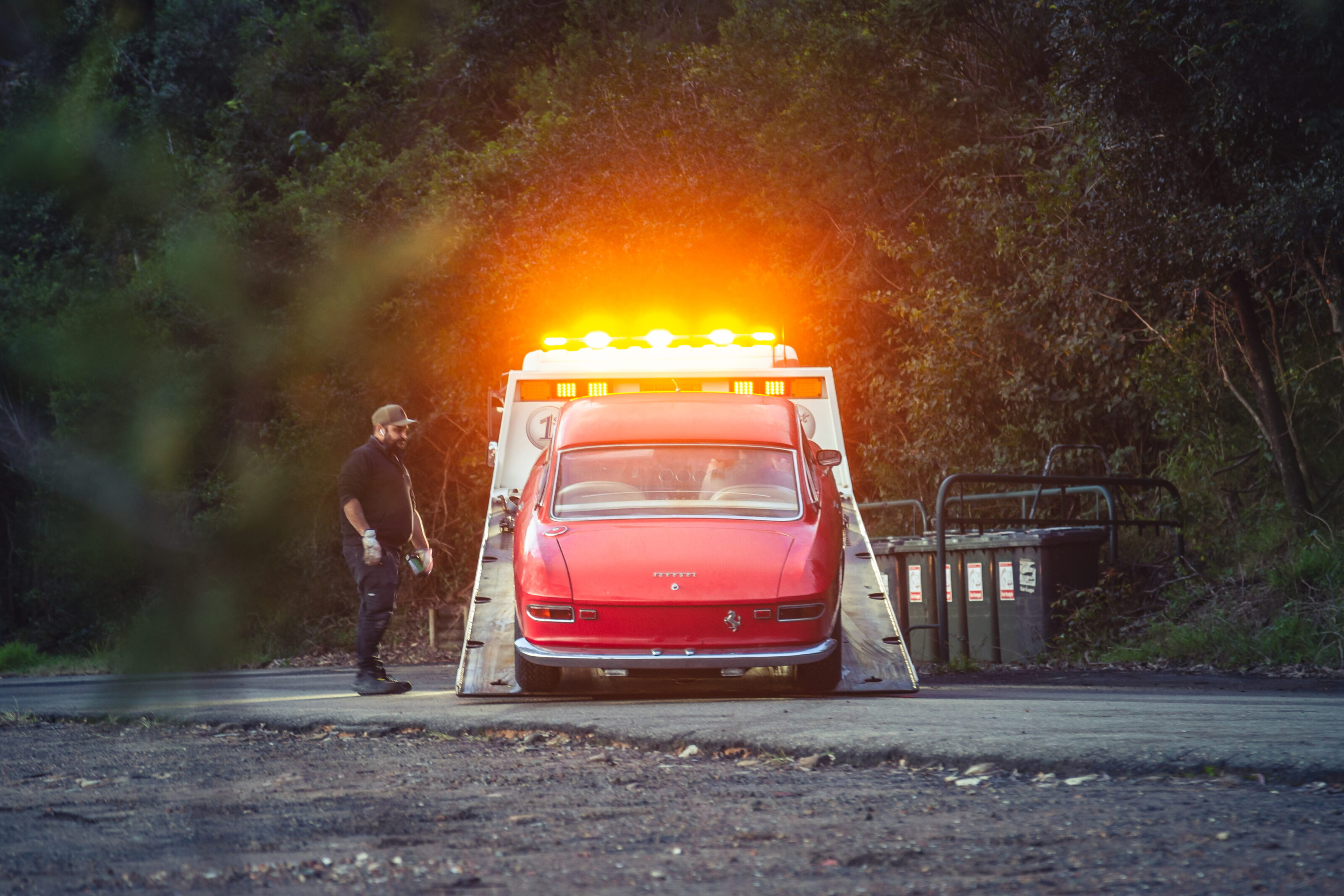
My turn. Even with the brake problem. Thick seats hold you tight, the three-spoke steering wheel is a long reach away, the pedals not too close. A lovely oily smell fills the cabin. Minor instruments stretch out across the dashboard, oil pressure and temperature are positioned between the 180mph speedo and 8000rpm tacho, redlined at 7000rpm. A short, almost delicately thin gear lever – no open gate on the 330 GT – operates the Series II’s five-speed gearbox.
I am as ready as I’ll ever be, though I don’t ever remember being as nervous before driving a car.
“You need to give it plenty of revs,” instructs Giacomo.
I blip and then hold the engine revs at around 3000rpm. It’s not enough to overcome the brakes. The car stalls. Humiliation. My ‘drive’ is over.
Every attempt to restart the car fails as the battery winds down. Giacomo has forgotten jumper leads. Finally, just as we discover the brakes are now free and the Ferrari can be pushed, he speaks to Adriano. A tow truck is ordered. In the now ‘perfect’ fading light we push the 330 GT into Thomas’s preferred location. He’s happy.
In the gathering dark, ignominiously the Ferrari returns to the workshop. One day, perhaps, when it’s been seriously fettled and is on Historic registration, I shall get to drive the car. Perhaps.
Should Franco change his mind and decide to restore the 330 GT, how much does it cost to restore a classic Ferrari?
“It’s a choice between quick and expensive or long and cheaper,” says Giorgi. “You can spend two grand a day if two blokes are working on the car.”
Four Eyes: The Design
Born in 1934 in Detroit, designer Tom Tjaarda spent his career in Italy and is most famous for his Fiat 124 Spider, Chevrolet Corvette Rondine and De Tomaso Pantera designs.
Ferrari wanted an elegant, still sporting car and Tjaarda crafted a pleasing three-box shape with a rakish C-pillar and four round headlights, with the larger pair on the outside for a slightly cross-eyed look.
Enzo Ferrari objected to the lights, but eventually gave in when it was pointed out that even Rolls-Royce had facelifted the Silver Cloud to accommodate four headlights.
When journalists drove test cars a few months after the October 1963 launch, they almost universally objected to the look of the paired headlights.
Barely two years later, after Tjaarda had returned to Ghia, the four lights were gone, replaced by more elegant, single round lights to create the more desirable Series II 330 GT you see here.
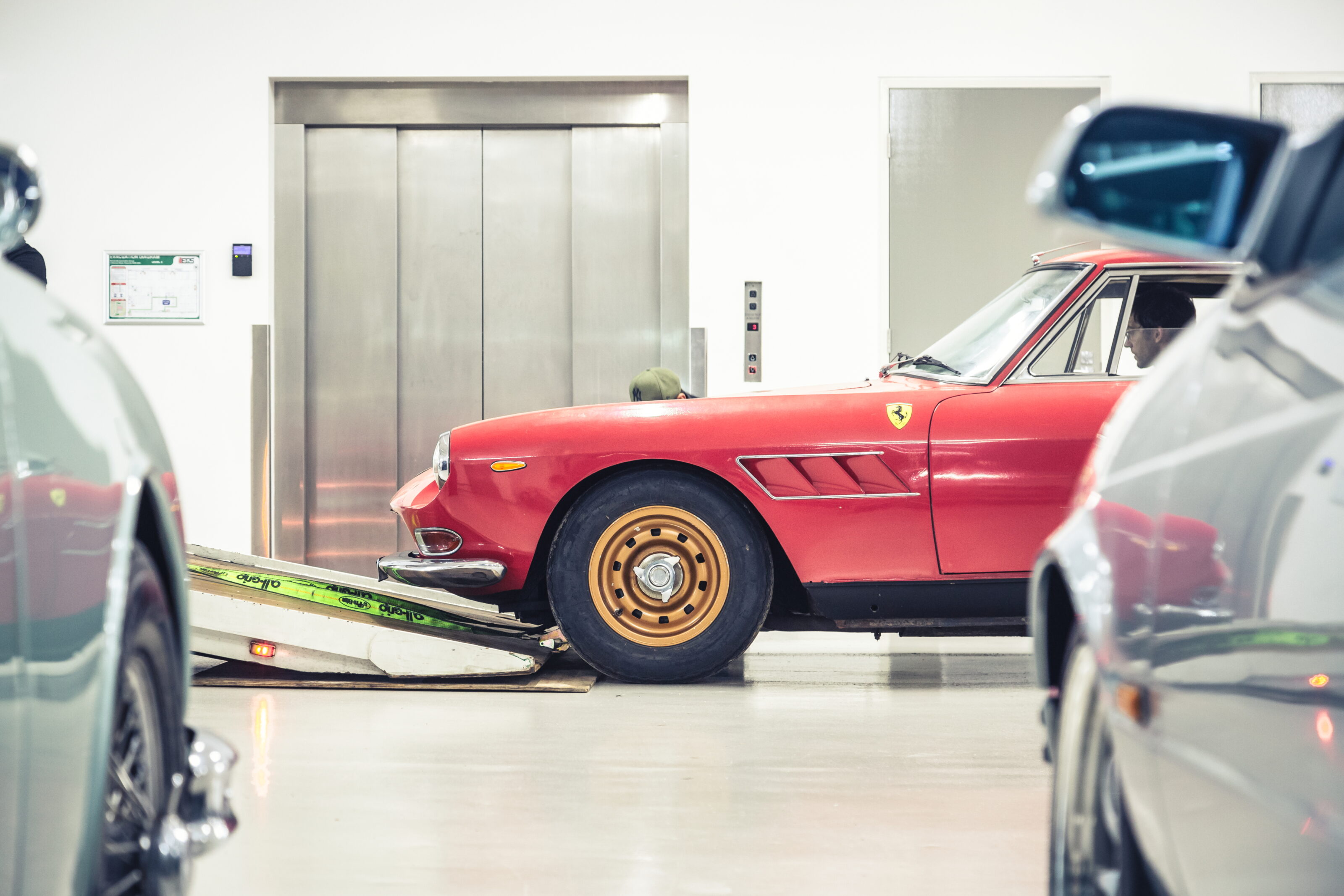
Writer’s Note: GM’s Ferrari
I recently discovered that the Ferrari 330 GT played an important role in the development of GM’s 1960s E-car program that bred the Buick Riviera, Oldsmobile Toronado and Cadillac Eldorado.
Dick Ruzzin, whom I got to know when he ran GM’s Opel design studios for five years from 1991, was a Junior Creative Officer in the Oldsmobile studio in 1963 when the E-car program was in progress.
In an article on the creation of the Toronado, Dick, now an insightful contributor to Dean’s Garage, an American website devoted to car design, explained that John Beltz, the formidable chief engineer of Oldsmobile, decided they should buy a new 330 GT (red of course).
Beltz’s idea was to use the 330 GT’s tight, four-passenger coupe packaging to help define Olds’ vision for a personal car.
The design studio started with a clay the size of the Ferrari, but inevitably expanded to a size similar to a Camaro/Firebird.
As the styling developed, it then became bigger again to encompass the demands of Buick, Cadillac and Oldsmobile. I wondered what happen to GM’s Ferrari?





